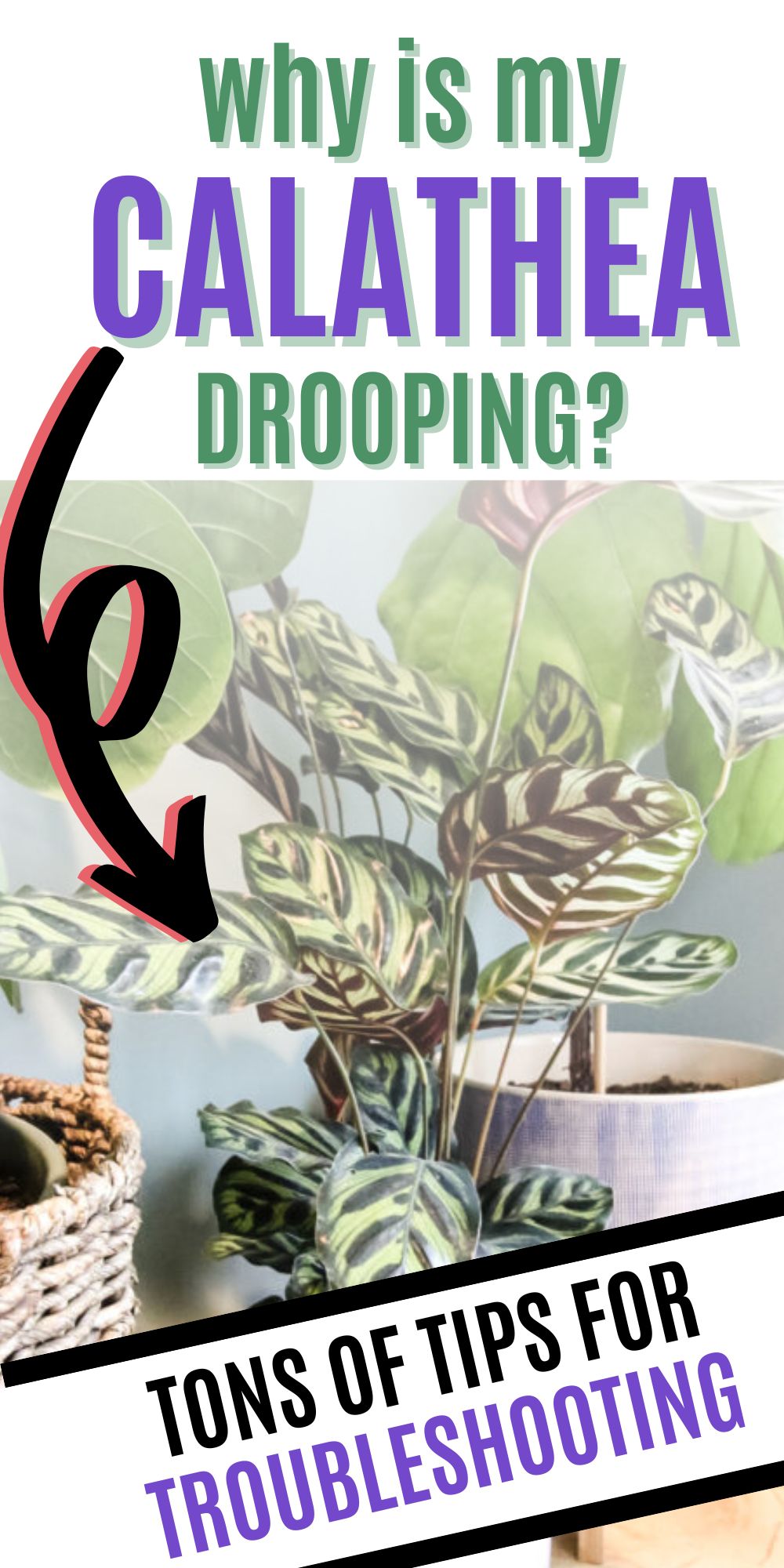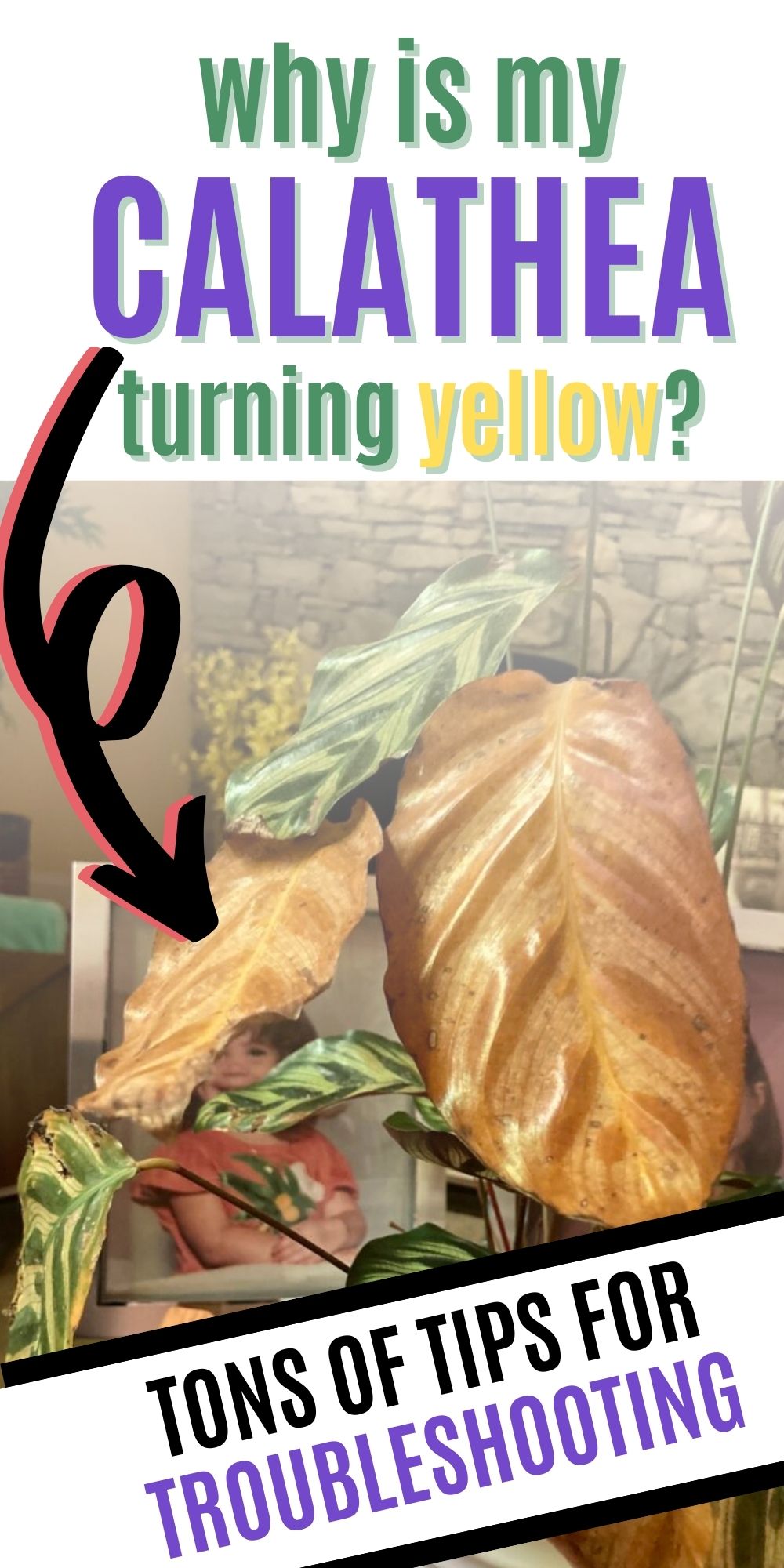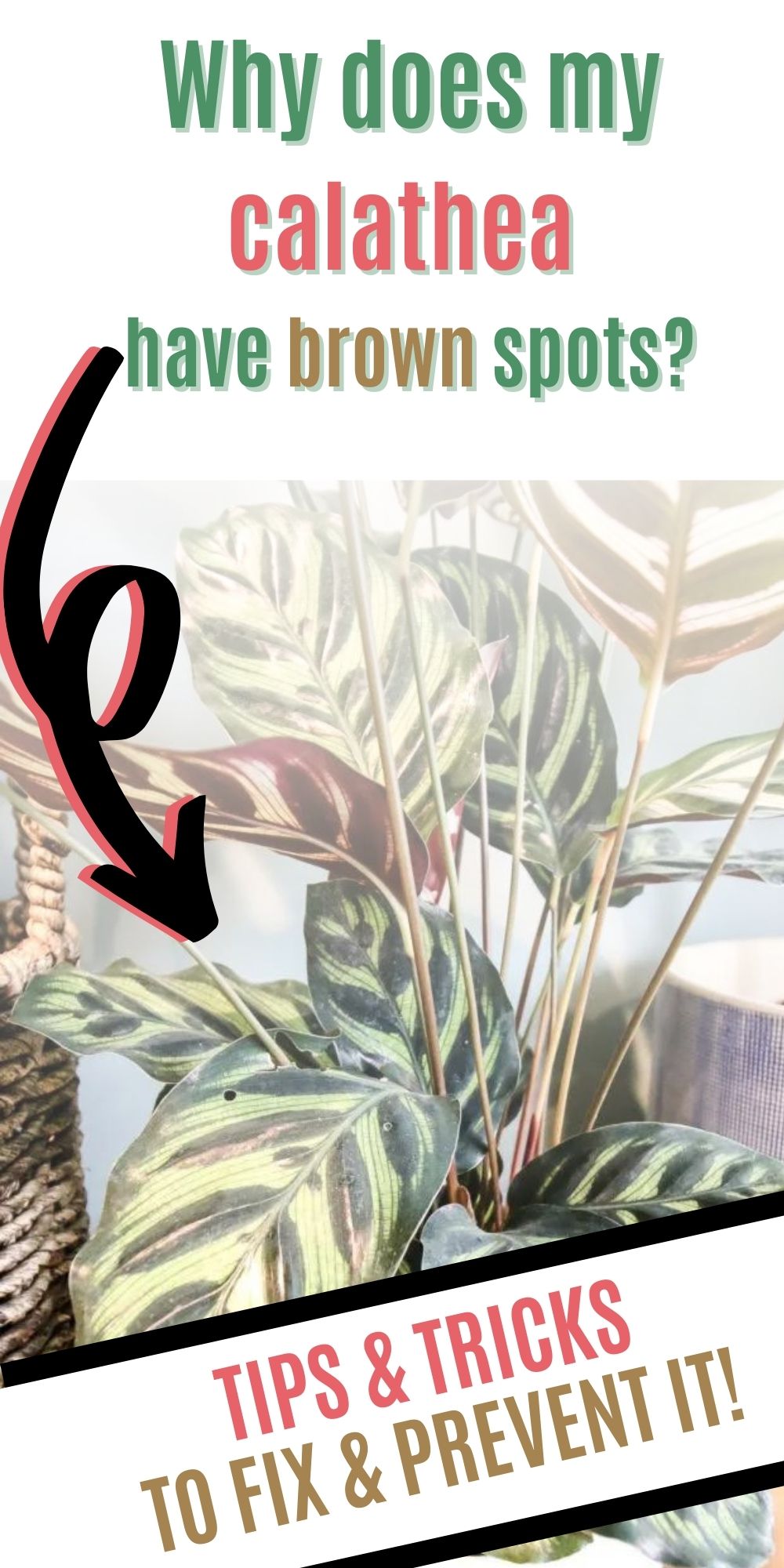Want to add a beautiful, pink plant to your houseplant collection? Check out the Calathea roseopicta - and our complete plant care guide!
My mom recently came to visit and, as she often does, she brought me a plant!
This was a cute lil pink calathea. She knows that pink is my favorite color, and couldn't resist picking one up!
This is a great houseplant for adding color to your collection. Let's dive in to learn more about the Calathea Roseopicta!
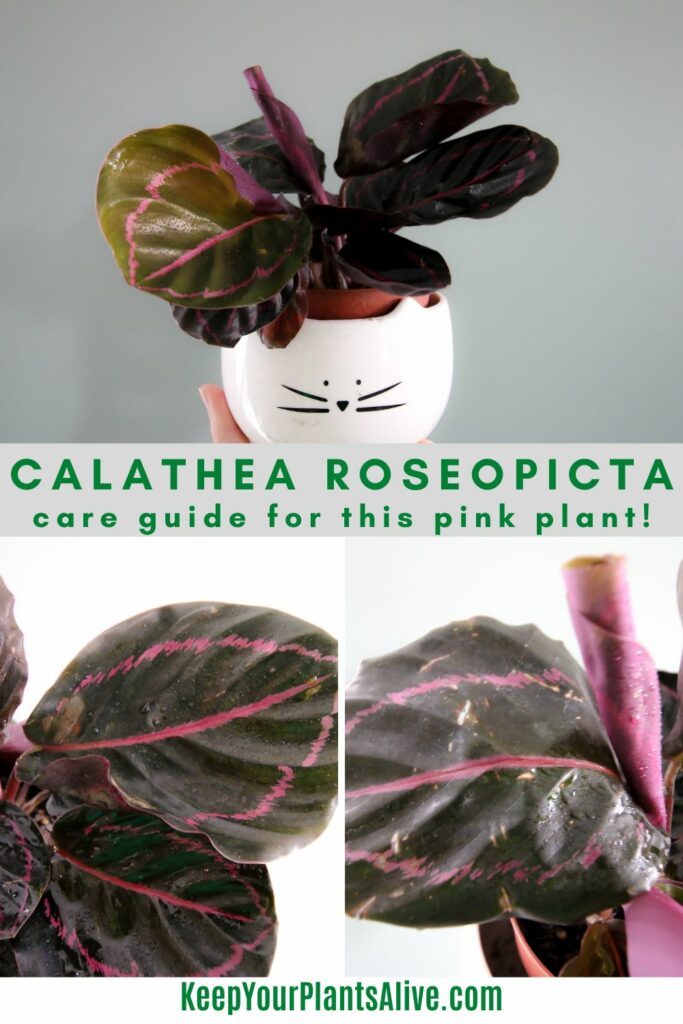
Calathea roseopicta plant care guide
Calathea roseopicta is a tropical plant species that belongs to the Marantaceae family.
The plant curls up at night and turns into a crimson show.
Due to the plant's perennial nature, you can appreciate its bold pink color all year long.
It has a clumping growing pattern, originates from a rhizome, and develops to a height of about 20 inches.
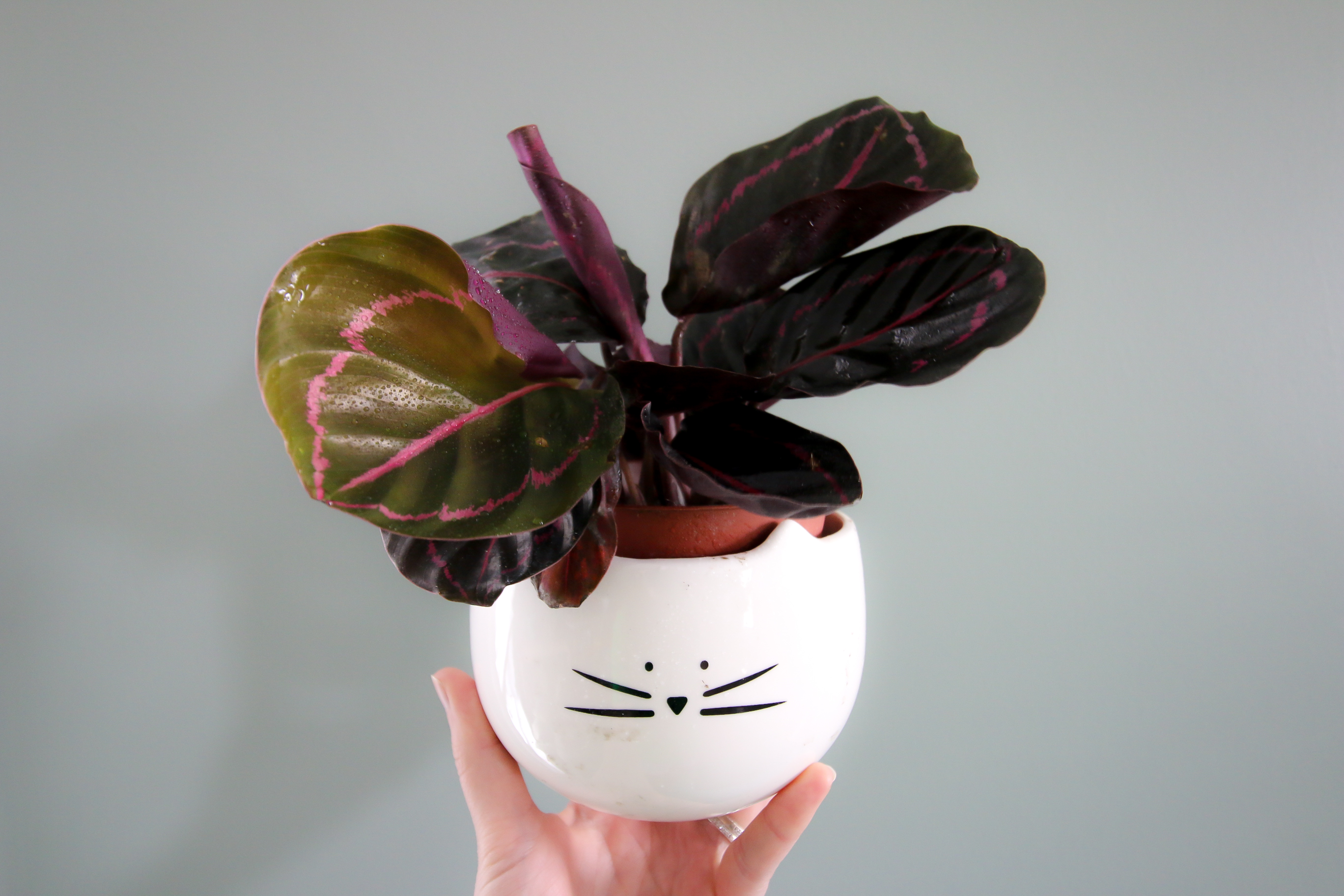
Other names for the calathea roseopicta plant are:
- Rose-painted calathea
- Calathea medallion
- Rose painted prayer plant
- Goeppertia roseopicta (recently reclassified)
- Calathea rosea picta
- Calathea roseolineata
These are all names for the same plant, so if you are searching for care tips or purchasing one for your home or garden, any of these names should lead you to the same species.
More about calathea plants:
- Peacock calathea care guide
- Calathea Network care guide
- Calathea roseopicta plant care guide
- Why are my calathea leaves sticky?
- Why are my calathea leaves curling?
- Why does my calathea plant have brown tips?
- Why is my calathea drooping?
- Why are my calathea leaves turning yellow?
Free printable Calathea care guide
Join the (free!) KeepYourPlantsAlive+ community to access this exclusive printable plant care guide! Once you sign up, you can right click & save the JPG care guide. Or keep scrolling for more!
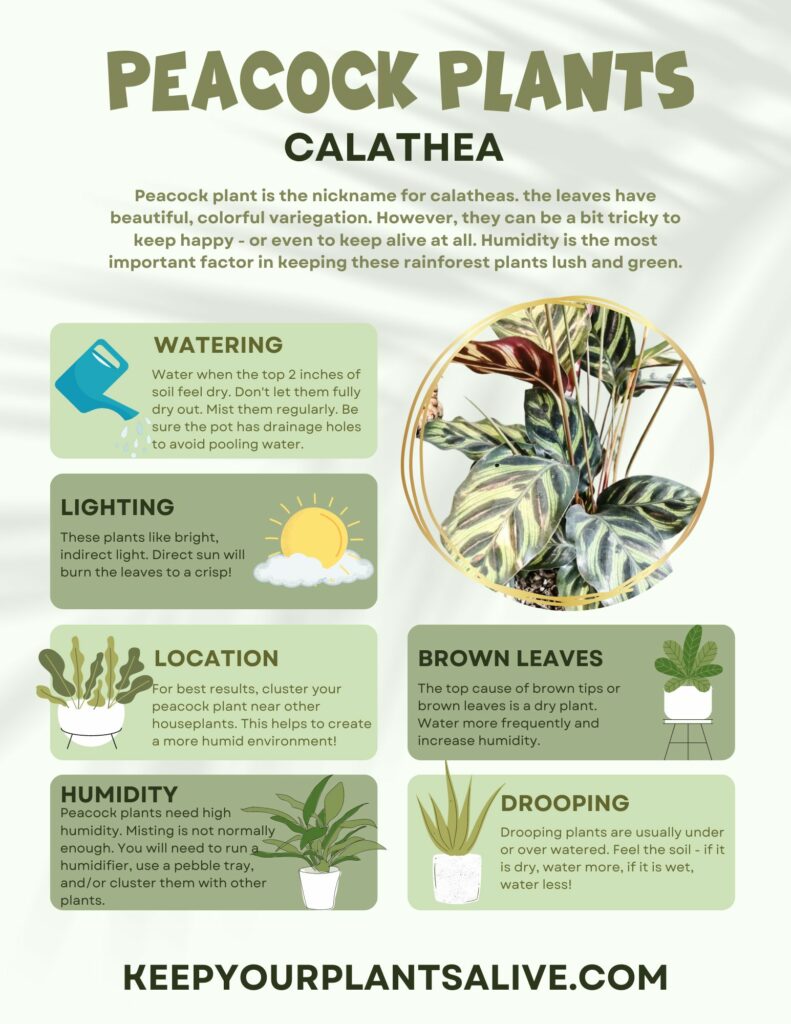
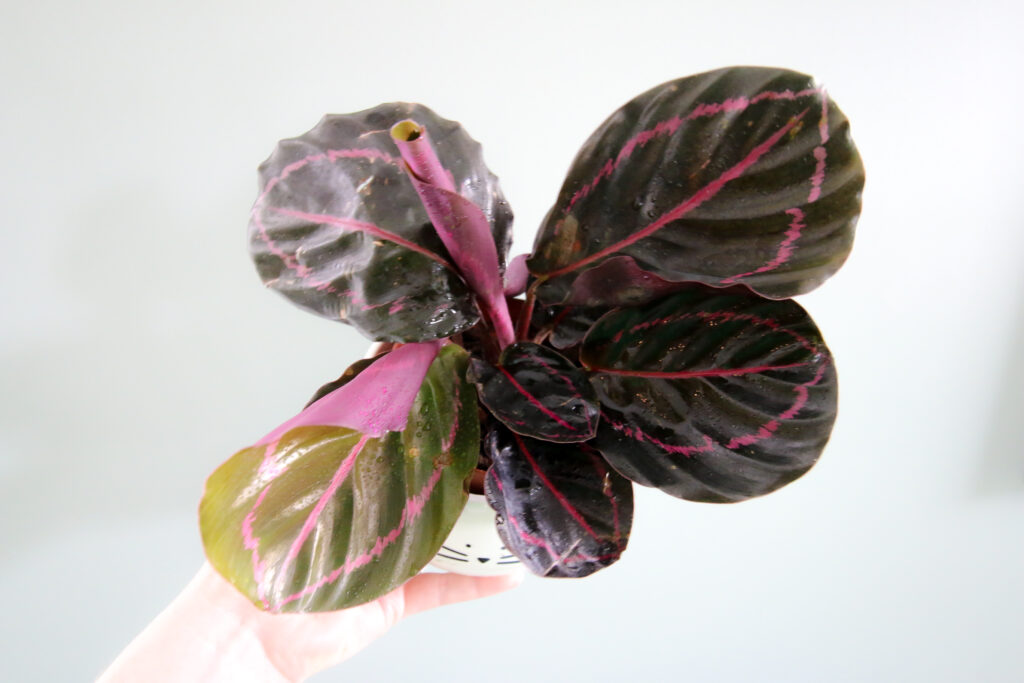
Origin of calathea rosepicta
This plant is native to the rainforests of Brazil and is known for its striking foliage, which is marked with shades of pink, green, and purple.
Also, the gorgeous Calathea roseopicta is a part of the family of prayer-plants.
Is Calathea roseopicta rare?
Calathea roseopicta is not considered a rare plant, as it is widely cultivated and readily available in the horticultural trade.
I'm pretty sure my mom grabbed it at Home Depot, and I consider a plant at Home Depot to be not rare. That doesn't mean that I don't love it, though!
However, certain cultivars or varieties may be more difficult to find or may be considered rare or uncommon.
For example, the Calathea roseopicta 'Dottie' cultivar features darker leaves with pink spots and is often sought after by plant collectors.
Overall, while rose-painted calathea may not be considered a rare plant, it is still a beautiful and desirable addition to any plant collection.
Is Calathea roseopicta toxic?
Calathea roseopicta is generally considered non-toxic to humans, cats, and dogs. However, keeping any plant out of reach of small children and pets is always a good idea to prevent accidental ingestion.
Although non-toxic, some people with sensitive skin may experience irritation if they come into contact with the plant's leaves or sap.
It's a good practice to wear gloves when handling any plants, especially if you are susceptible to irritations.
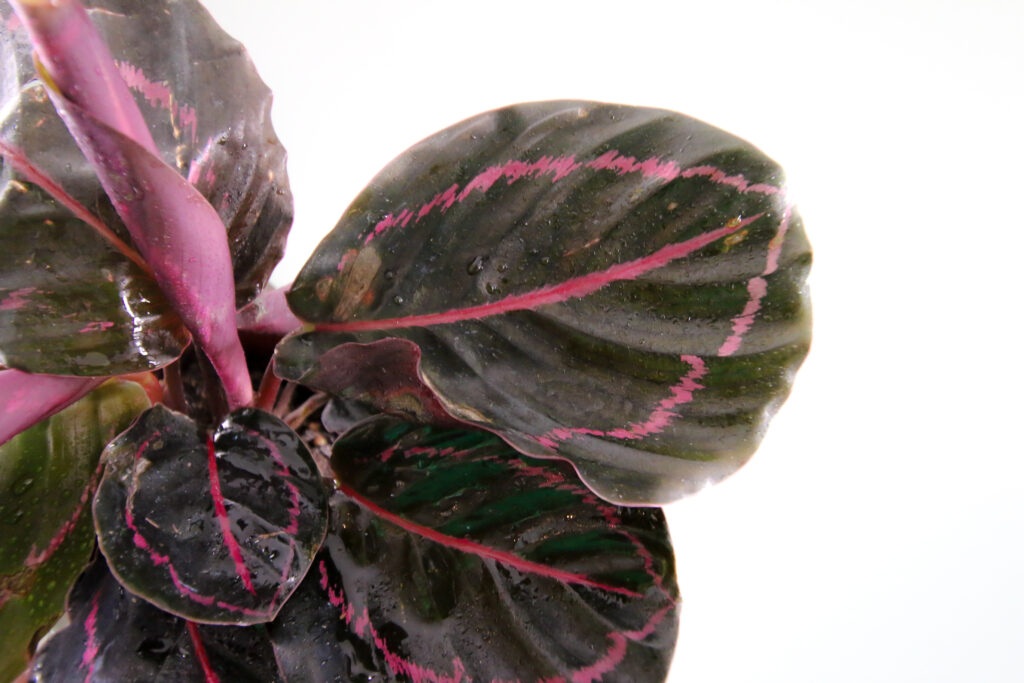
Calathea Roseopicta Watering
When it comes to watering Calathea roseopicta, it is important to keep the soil consistently moist but not waterlogged.
The plant prefers well-draining soil, and you should water it when the top inch of soil feels dry to the touch.
You should wait until the top inch (2.5 cm) of soil feels dry, then water thoroughly until it drains out of the bottom of the pot.
Here is our guide on how to drill drainage holes in a ceramic pot.
Discard any excess water in the saucer beneath the pot to prevent the plant from overwatering.
Calathea Roseopicta Lighting needs
Calathea roseopicta prefers medium to bright indirect light, but it should be protected from direct sunlight, which can scorch its delicate leaves.
You can place it near a north or east-facing window to provide it with the ideal lighting conditions.
Also, rose-painted calathea prefers to be kept in temperatures between 65°F to 75°F (18°C to 24°C).
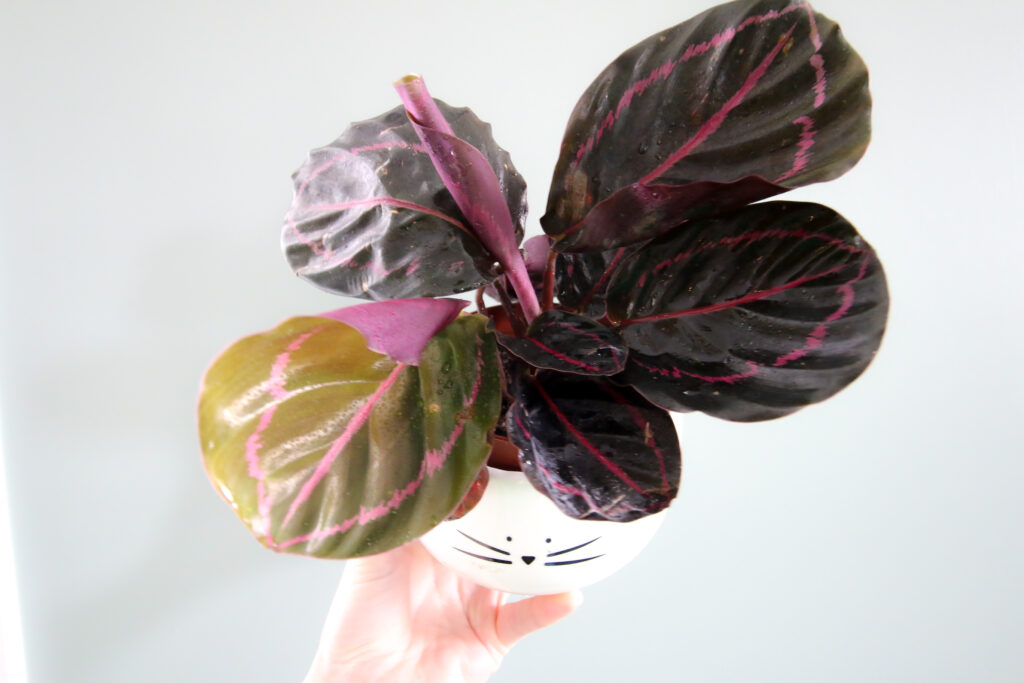
Calathea Roseopicta Soil & potting
On the topic of soil and potting, Calathea roseopicta prefers soil that is rich in organic matter and well-draining.
Mix equal parts of potting soil, perlite, and peat moss to create a well-draining soil mixture.
The plant also prefers a pot with drainage holes to prevent water from accumulating at the bottom of the pot.
Can I keep Calathea roseopicta outdoors?
Calathea roseopicta is best kept indoors because it prefers warm temperatures and high humidity.
However, it can be placed outdoors in a shaded area during summer as long as it is protected from direct sunlight and strong winds.
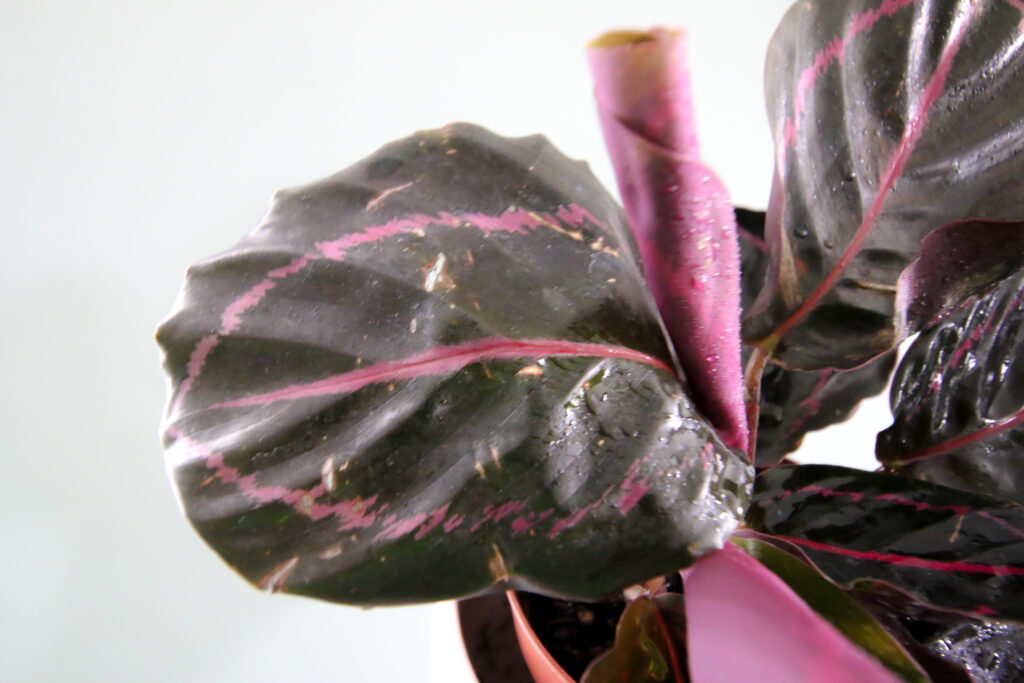
Calathea Roseopicta Fertilization
When it comes to fertilizing Calathea roseopicta, you can use a balanced fertilizer once a month during the growing season (spring and summer).
However, be sure to dilute the fertilizer to half-strength to avoid damaging the plant's roots. During the dormant season (fall and winter), you can reduce or stop fertilization altogether.
Does Calathea roseopicta like to be rootbound?
Calathea roseopicta does not like to be root bound, so it's important to ensure that its pot is appropriately sized for the plant's growth. Repotting is recommended every 1-2 years or when the plant becomes visibly root bound.
Does Calathea roseopicta need a moss pole?
A moss pole is not necessary for Calathea roseopicta to thrive, but it can be beneficial if you want to promote upright growth and give the plant additional support.
If you decide to use a moss pole, securing it in the soil without damaging the plant's roots is important.
Alternatively, you can also use other support structures, such as stakes or trellises, to provide support for your rose-painted calathea.

How to propagate Calathea roseopicta
- Cut a healthy stem from the mother plant, ensuring it has at least one leaf attached.
- Dip the cut end of the stem in rooting hormone powder.
- Place the stem cutting in a pot filled with moist potting soil.
- Cover the pot with a plastic bag or a clear plastic container to create a humid environment.
- Place the pot in bright, indirect light and keep the soil moist.
- Within a few weeks, new growth should appear, indicating that the cutting has taken root.
- Remove the plastic bag or container and care for the new plant like a mature Calathea roseopicta.

Troubleshooting Calathea roseopicta
Caring for a Calathea roseopicta is fairly easy, but it can sometimes encounter problems like any houseplant.
- Curling leaves: If your Calathea roseopicta's leaves are curling, it's likely a sign that the plant isn't getting enough water or humidity. Try misting the leaves or placing a humidifier nearby to increase the humidity, and make sure the soil is moist but not waterlogged.
- Browning leaf tips: Brown leaf tips often indicate dry air or inconsistent watering. Increase the humidity around the plant and ensure you water them regularly and consistently.
- Yellowing leaves: If your Calathea roseopicta's leaves turn yellow, it may be a sign of overwatering or poor drainage. Check the soil to ensure it's not waterlogged, and ensure the pot has drainage holes to allow excess water to escape.
- Pest infestations: Rose-painted calathea can sometimes be vulnerable to spider mites, mealybugs, and other pests. Check the leaves and stems regularly for signs of infestation, such as small webs, white cotton-like growths, or small insects. If you spot any pests, treat them with a suitable insecticide or by wiping the leaves with a damp cloth.
By being attentive to your Calathea roseopicta's needs and responding promptly to any issues that arise, you can help ensure your plant stays healthy and thriving.
Check out our guide to ensure you give your plant the best care possible.

Thanks for reading!


Hey there, I'm Morgan, a houseplant enthusiast from sunny Charleston, South Carolina. Growing up surrounded by my mom's lush orchids and African violets, I discovered the magic of bringing nature indoors. Thanks to the pandemic, I delved deeper into houseplants, discovering their power to uplift moods and transform spaces. I'm here to spill all my secrets, helping you pick the perfect houseplant - and make it happy. Let's keep your plants alive, together! 😊


